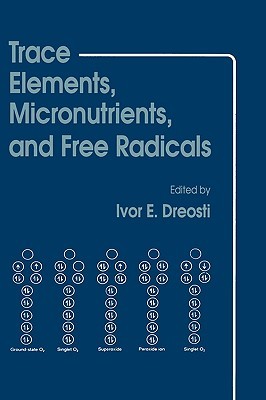
- We will send in 10–14 business days.
- Author: Ivor E Dreosti
- Publisher: Humana Press
- ISBN-10: 0896031888
- ISBN-13: 9780896031883
- Format: 15.8 x 23.4 x 2 cm, kieti viršeliai
- Language: English
- SAVE -10% with code: EXTRA
Reviews
Description
Itisonlyrecently thatthe naturaloccurrenceoffree radicalsin biological tissue has become widely accepted, and that the suspi- cion with which biologists previously viewed the free radicals of radiationchemistryhas beenplacedin a broaderperspective. Now, oxygen-derived free radicals are considered respectable biochemi- cal intermediates, given always the caveat that unwanted tissue damage may arise if these active species are produced in such abundance that they overwhelm the natural antioxidant and free- radical defense mechanisms, or if these systems have become hypoeffective. Many factors, including several dietary manipula- tions, can lead toelevatedproductionofsuperoxide and may result in free radical overload, whereas a deficiency of those micronutri- ents associated with the antioxidant defense mec.hanisms may re- sult in substantially diminished antioxidant capacity. By now, antioxidants have become a household word and al- most everyone is aware of their imponance in protecting the body against attack by active oxygen species. Indeed, it is a paradox of nature that oxygen, which is so essential to sustain aerobic life, ul- timately contributes to its destruction. Not surprisingly, recogni- tion ofthis dilemma has generated a spate ofantioxidant strategies intended to reduce the risk of tissue damage by rampant oxygen radicals, some sadly based less on science than on speculation.
EXTRA 10 % discount with code: EXTRA
The promotion ends in 22d.11:19:43
The discount code is valid when purchasing from 10 €. Discounts do not stack.
- Author: Ivor E Dreosti
- Publisher: Humana Press
- ISBN-10: 0896031888
- ISBN-13: 9780896031883
- Format: 15.8 x 23.4 x 2 cm, kieti viršeliai
- Language: English English
Itisonlyrecently thatthe naturaloccurrenceoffree radicalsin biological tissue has become widely accepted, and that the suspi- cion with which biologists previously viewed the free radicals of radiationchemistryhas beenplacedin a broaderperspective. Now, oxygen-derived free radicals are considered respectable biochemi- cal intermediates, given always the caveat that unwanted tissue damage may arise if these active species are produced in such abundance that they overwhelm the natural antioxidant and free- radical defense mechanisms, or if these systems have become hypoeffective. Many factors, including several dietary manipula- tions, can lead toelevatedproductionofsuperoxide and may result in free radical overload, whereas a deficiency of those micronutri- ents associated with the antioxidant defense mec.hanisms may re- sult in substantially diminished antioxidant capacity. By now, antioxidants have become a household word and al- most everyone is aware of their imponance in protecting the body against attack by active oxygen species. Indeed, it is a paradox of nature that oxygen, which is so essential to sustain aerobic life, ul- timately contributes to its destruction. Not surprisingly, recogni- tion ofthis dilemma has generated a spate ofantioxidant strategies intended to reduce the risk of tissue damage by rampant oxygen radicals, some sadly based less on science than on speculation.


Reviews